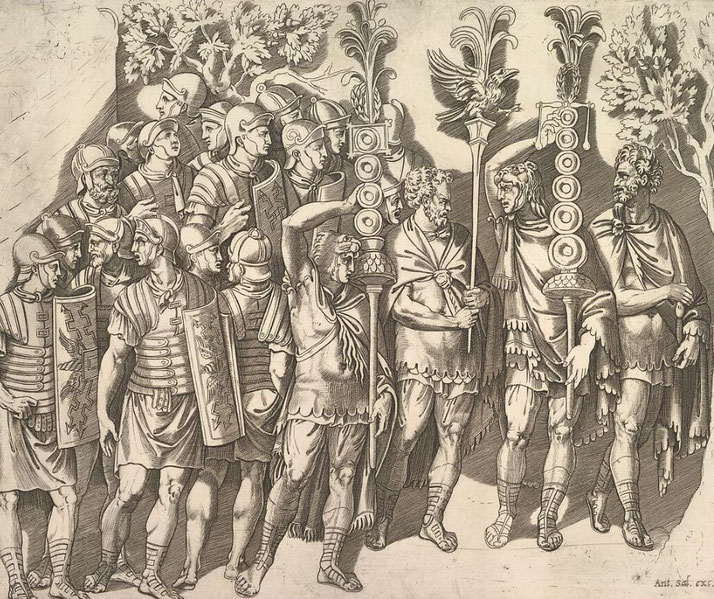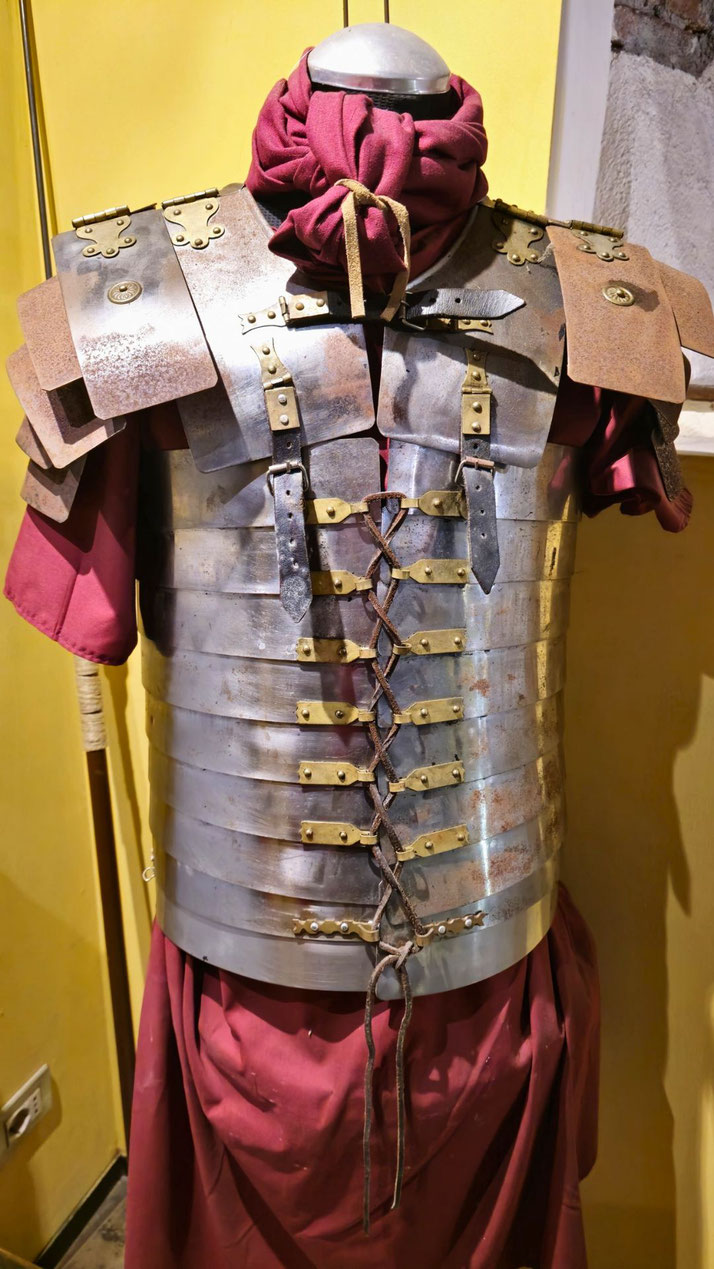How the Roman legions changed throughout their 1000-year history

From the heart of Italy arose an empire that would dominate the ancient world for over a thousand years. A key part of this empire’s power and lasting influence was its military, at the core of which were the Roman legions.
They took their name from the Latin word ‘legio’ meaning ‘levy of soldiers’. However, the Roman legions were not a single, static organisation, but actually changed over the centuries in response to external threats, internal conflicts, new technology and even social shifts.
Over time, they became more refined weapons of war.
What were the very first Roman armies like?
The early Roman military drew ideas from its neighbours, especially the Etruscans to the north and the Greeks to the south.
The Etruscan influence mattered a great deal, since Rome was under Etruscan rule during the late monarchy period (7th to 6th century BCE).
The early Roman army probably consisted of a levy of citizens who could afford their own gear and was arranged into a phalanx in the Greek style.
This citizen militia was, like the Greek phalanx it copied, a heavy infantry force.
The soldiers, or hoplites, fought in a tight formation with large shields and long spears.
That formation worked well on the flat land of Greece, but it was less suited to the hilly and uneven terrain of central Italy.
Also, it depended on a level of training and commitment that a citizen militia could not always provide.
As Rome began to expand and clash with other peoples of Italy, it faced challenges that its hoplite phalanx could not meet.
The weaknesses of the phalanx became clear in Rome’s early wars against its hill-dwelling neighbours such as the Samnites.
Its limits in manoeuvring and flexibility on rough ground led to major Roman defeats and forced Rome to review its military structure.

The birth of the 'maniple system'
Those early conflicts prompted Rome to move away from the rigid Greek phalanx to the more flexible manipular system, which was known for its checkerboard layout and flexible tactics, and which handled varied terrain more effectively.
The basic element of this early legion was the maniple or manipulus, which meant ‘a handful’.
Each maniple usually had 120 soldiers in the early manipular legions, and these groups were set in staggered lines across three ranks.
The first rank was made up of hastati, young and less experienced soldiers; the second of principes, the prime soldiers in their 30s; and the final rank of triarii, veterans with the most experience.
This layout let the Roman army be more flexible on the battlefield, able to fill gaps, carry out complex manoeuvres and hold formation under attack.
The soldiers’ equipment improved too, and legionaries now carried a short stabbing sword, the gladius, and two pila, heavy javelins designed to break enemy lines.
The manipular legion worked both as a tactical formation and a social unit. The soldiers were citizens who brought their own kit and fought for their city and homes.
However, wealthier citizens served in the cavalry, where the armour and weapons cost more but offered greater prestige.
This link between military service and social position and wealth was a key feature of the Roman Republic.
But the manipular system had its drawbacks. For instance, the soldiers supplied their own gear, which meant that the quality of arms and armour could vary a lot.
The seasonal, citizen-based army struggled with long wars and distant missions as Rome’s borders expanded.
Regardless, the early manipular legions played a vital role in Rome’s eventually victories against its neighbours, including the later Samnite Wars of the 4th and early 3rd centuries BCE.
At the Battle of Sentinum in 295 BCE, Roman legions beat an alliance of Samnites, Gauls, Umbrians and Etruscans, which demonstrated their ability to adapt and manoeuvre against different enemies.
The Marian reforms
The manipular system was pushed to its limits during the Punic Wars against Carthage in the 3rd and 2nd centuries BCE.
However, by the late 2nd century BCE, Rome had stretched well beyond Italy.
Conquests in Spain, North Africa and the eastern Mediterranean had turned Rome from a regional power into a growing empire.
At this point, Gaius Marius became consul seven times and introduced important changes from 107 BCE that changed the legions’ structure.
Marius removed the property requirement for service so the army could recruit many more men, opening the legions to poorer, landless citizens.
By removing these barriers, Marius turned the legions into a professional standing army. He also made training, weapons and gear uniform across the legions.
The separate manipular units, hastati, principes and triarii, were replaced by the single legionary, a heavy infantryman with the same equipment.
The maniple was replaced by the cohort, made up of six centuries (about 480 men). Ten cohorts formed a legion.
When a new recruit joined, he was placed in a century based on his wealth and status at enlistment.
Marius also increased each soldier’s self-sufficiency when he required them to carry their own weapons, food and tools.
This earned them the nickname muli Mariani (Marius’ mules). He also introduced the eagle, or aquila, as the only standard of the legion.
This symbol was meant to boost troop morale and loyalty, and it actually became an effective sign of Roman military power.
The Marian reforms gave more citizens a chance for glory and wealth, but also caused social and political tensions as generals like Marius and later Julius Caesar used their armies to increase their political influence.
Ultimately, by making the army professional, Marius built a force that could project Rome’s power around the world, and opened the way for the Empire’s expansion.
By breaking down the socio-economic barriers to service, Marius effectively democratized the legions and transformed them into a professional standing army, available for deployment at any time and place within the vast Roman territories.

The dawn of the imperial legions
After Julius Caesa's death and Augustus’ rise, the legions changed again. The late Republic’s civil wars had shown the risk of armies loyal to their generals more than to Rome.
As he took control and set up the principate, Augustus became known as the ‘father of the Roman army’ and secured the professional army started by Marius.
He set service terms at 16 years active and four in reserve (later 20 plus 5), and in return soldiers received land or a pension when they left.
This offered poorer citizens a steady career, and, it was hoped, would secured their loyalty to the emperor.
Also, the legion’s structure became uniform. Each legion of about 5,000 men had ten cohorts, with the first cohort twice the size of the others.
Each cohort had six centuries led by centurions. As a result, this structure made it easy to move units around the empire.
Legions were also tools of Romanisation. They spread Latin language, Roman customs and law wherever they went.
Also, veteran soldiers often settled in the provinces, and these settlements spread Roman influence and added to social stability.
Augustus also set up the Praetorian Guard for his protection and the auxilia, which were non-citizen troops who added light infantry, cavalry and specialist skills to the army. After 25 years, auxilia troops could gain citizenship.
So, during the Pax Romana (27 BCE to 180 CE), the imperial legions guarded borders, kept order, built roads and forts.
At its height in the 2nd century CE, the army numbered about 400,000 men: roughly 150,000 legionaries and 250,000 auxiliaries across the frontiers.
The fragmentation of the late Roman legions
As the Roman Empire moved into its later stages from the third century CE onwards, it faced many new challenges, such as internal power struggles, economic problems and raids by Germanic tribes.
In response, these led to major changes in the Roman legions to address the need for stronger defence.
Under Emperor Diocletian and later Constantine the Great, the Roman army was reorganised again.
The legions were broken up into smaller, more flexible units that could deal with threats along the long frontier.
Now, the comitatenses were mobile troops that could be sent quickly to emergencies within the Empire, while the limitanei, or "border troops", focused on the frontiers.
This period also saw greater use of cavalry and lighter infantry. At the same time, the concept of citizenship shifted when in 212 CE Emperor Caracalla granted Roman citizenship to all free men in the Empire, which removed the distinction between citizens and non‑citizens in the auxilia.
This change showed the Empire’s more varied composition, but it also moved away from the citizen-soldier ideal of the Roman Republic.
On balance, these adjustments helped the Roman Empire last for another two centuries, but these legions looked very different from the citizen armies of the Roman Republic or the professional legions of the early Empire.

The slow decline of the Empire and its legions
As the Western Roman Empire entered its final phase, the legions that once marched across Europe, Asia, and Africa faced very difficult problems.
Following this phase, political disorder and economic decline weakened the Empire from within, making it hard to maintain the same level of discipline and organisation that had defined the legions in their prime.
Also, there was a rising trend of barbarisation in the legions as the army relied more on Germanic and other barbarian recruits to fill its ranks.
The legions' battle methods, weapons, and even their makeup changed in those later centuries.
Eventually, the heavy infantry at the core of the Roman army gave way to a force centred on cavalry.
Later, the sack of Rome by the Visigoth king Alaric in 410 CE showed the declining effectiveness of the traditional legions.
Finally, the clear end of the Roman legions came with the fall of the Western Empire in 476 CE, when the last emperor, Romulus Augustulus, was removed by the Germanic king Odoacer.
This event ended the single political state known as Rome in the west and by extension the Roman legions.
Meanwhile, the Eastern Roman Empire continued on under the name Byzantine Empire and kept some form of the Roman military tradition.
Over time, elements of the old legionary system carried on in the Byzantine army, but these units were increasingly merged with or replaced by new forms such as the theme system or the elite tagmata.
What do you need help with?
Download ready-to-use digital learning resources
Copyright © History Skills 2014-2025.
Contact via email
With the exception of links to external sites, some historical sources and extracts from specific publications, all content on this website is copyrighted by History Skills. This content may not be copied, republished or redistributed without written permission from the website creator. Please use the Contact page to obtain relevant permission.





